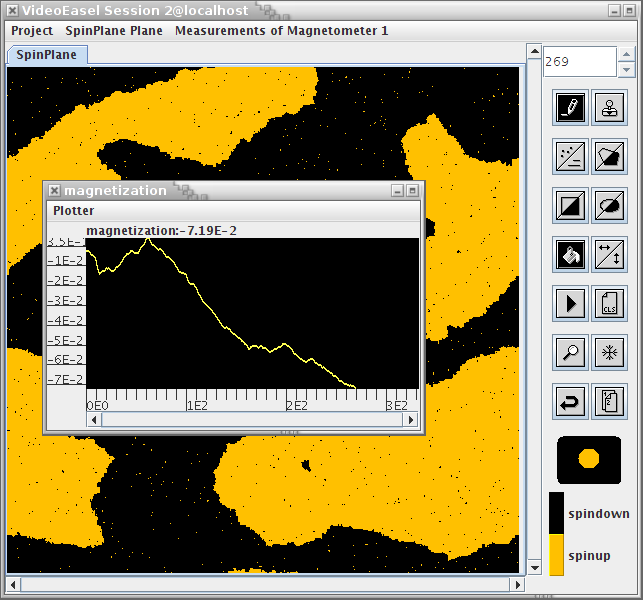VideoEasel (Universität Stuttgart)
Virtual Laboratories are learning and research environments allowing users to design, setup and perform experiments in a computer. Virtual laboratories use the metaphor of a physical lab: Similar to its real counterparts, experiments are designed from components - a physical simulation and measurement devices - that are plugged together as required for the experiment.
 Virtual Laboratories support education and research by making phenomena accessible that were only formulated as abstract concepts; they provide additional experiments for students in class or at home, and extend the laboratory capacity by setups that are either hard or impossible to perform in reality.
Virtual Laboratories support education and research by making phenomena accessible that were only formulated as abstract concepts; they provide additional experiments for students in class or at home, and extend the laboratory capacity by setups that are either hard or impossible to perform in reality.
The Virtual Laboratory of the University of Stuttgart - VideoEasel - focusses on simulations from the fields of many-body systems, statistical mechanics, image processing and many related topics. Over 50 experiments are available, only a minor selection of which shall be shown here:
 The Ising model (left) is one of the best studied systems in statistical mechanics demonstrating that the ferromagnetism of iron is the outcome of a simple microscopic coupling of individual atomic magnets, here called spins. It is one of the very few models whose properties can be proven rigorously.
The Ising model (left) is one of the best studied systems in statistical mechanics demonstrating that the ferromagnetism of iron is the outcome of a simple microscopic coupling of individual atomic magnets, here called spins. It is one of the very few models whose properties can be proven rigorously.
The second example shows the interference of a planar wave on a double-slit (right): The virtual laboratory simulates here the wave equation, one of the fundamental equations of physics describing the propagation of radio waves, light, water and sound. The double-slit experiment is one of the fundamental experiments in quantum mechanics demonstrating that even particles have a wave character by demonstrating that a particle stream shows an interference pattern similar to that of light or water waves.
For more information, please visit the VideoEasel website.

